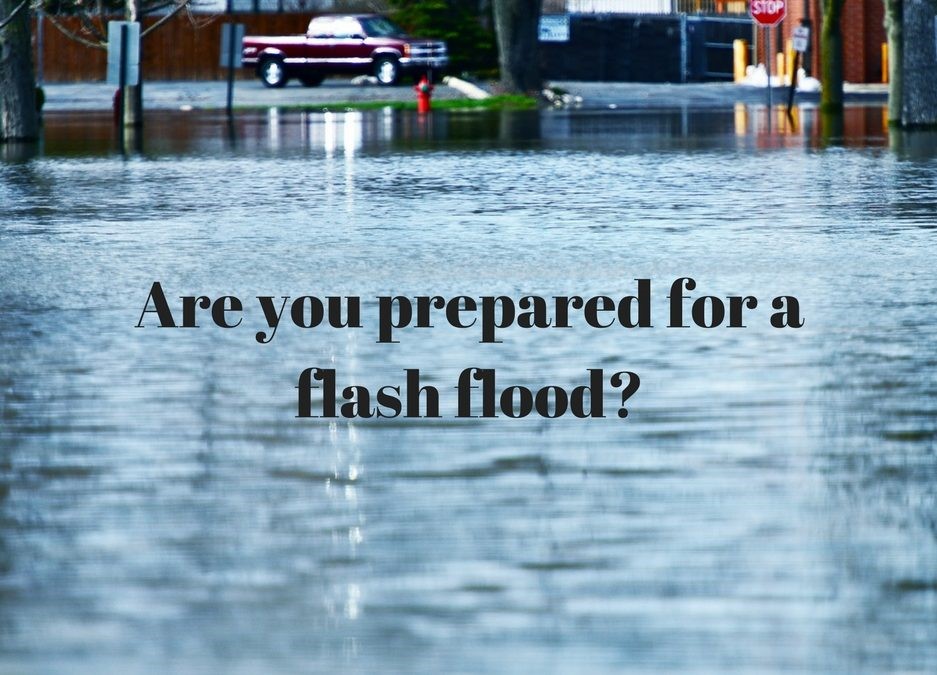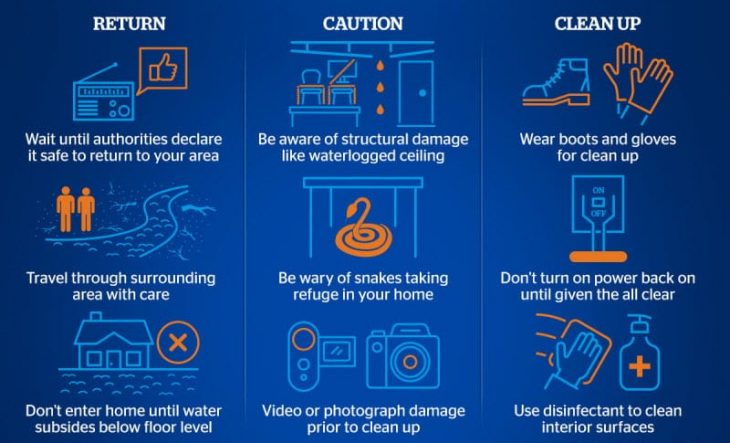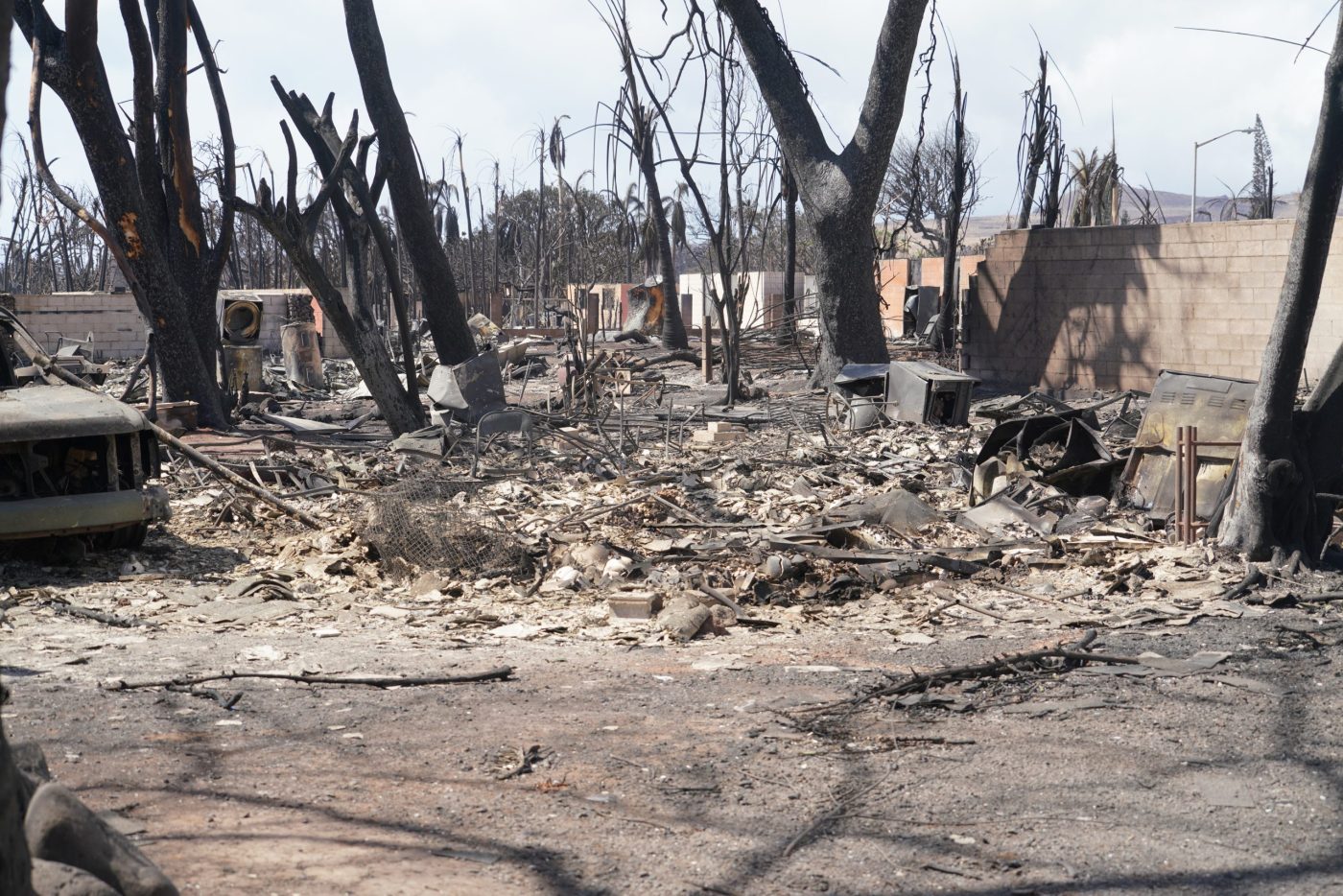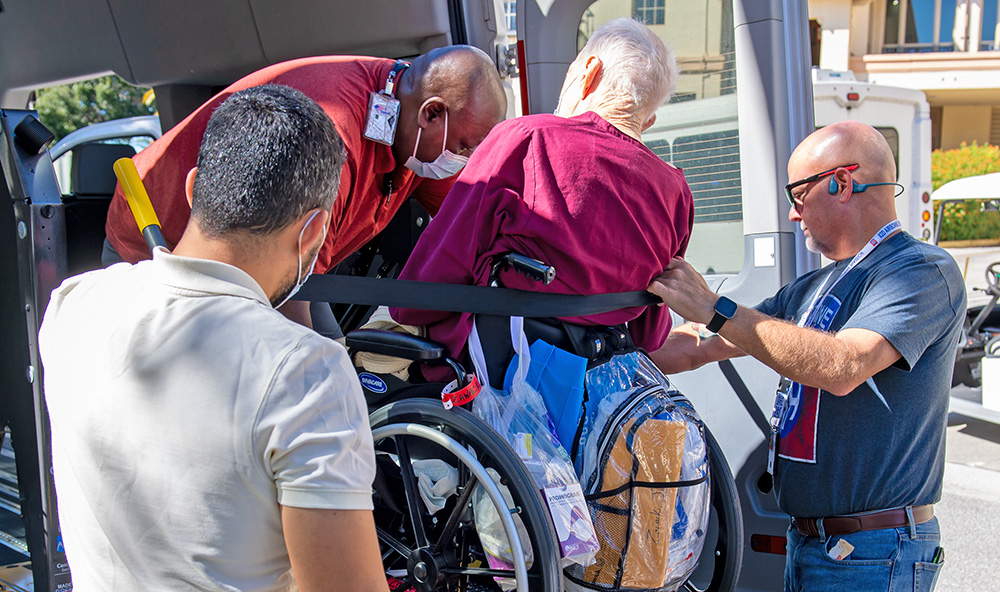While early spring can be a welcome break from winter weather, it brings with it an increased risk of floods. They are among the most frequent and costly natural disasters that occur each year.
Floods are caused by a variety of factors, including a sudden accumulation of rain, rising rivers, tidal surges and dam failures. Flash floods develop quickly due to the rapid rising water along a stream or low-lying area. These types of disasters often happen after a hurricane, thawing snow, or several days of sustained rain.
Wildfires add another layer of risk during the rainy season because of the dangerous landslides and debris that can rush down fire-scarred hillsides. Failing to evacuate flooded areas or entering flood waters can lead to injury or death. Learn what to do to keep you and your loved ones safe!
Before a flood
- Understand the difference between a flood watch (start preparing) and a flood warning (occurring now).
- Learn about flood risks in your area. Check with your local government for recommendations.
- Make a plan for your household, including your pets, so that you and your family know what to do, where to go, and how to protect yourselves from flooding. Remember that some evacuation shelters do not accept pets.
- Build a “Go Kit” of the supplies you will need if you have to quickly evacuate your home. Don’t forget your rubber boots, sturdy shoes, waterproof gloves, and insect repellent.
- Sign up for your community’s warning system – Emergency Alert System (EAS) and National Oceanic and Atmospheric Administration (NOAA) Weather Radio.
- Learn and practice evacuation routes, shelter plans, and flash flood response.
- Purchase or renew a flood insurance policy. Homeowner’s policies do not cover flooding. It typically takes up to 30 days for a policy to go into effect so the time to buy is well before a disaster. Get flood coverage under the National Flood Insurance Program (NFIP).
- Keep important documents in a waterproof container. Create password-protected digital copies.
- Protect your property. Move valuables to higher levels. Bring outdoor belongings, such as patio furniture, indoors. Declutter drains and gutters. Install check valves. Consider a sump pump with a battery. Turn off propane tanks to reduce the potential for fire.
- Listen to local area radio, NOAA radio or TV stations for the latest information and updates.
- Fill your car’s gas tank, in case you need to evacuate.
During a flood
- Depending on the type of flooding (watch vs. warning), go to the safe location you have identified in your emergency plan.
- Stay off of bridges over fast-moving water.
- Get to the roof of your car if you are trapped and water is able to get in. If no water gets in, stay inside the car.
- Go to the highest level of a building if you are trapped. Do not climb into a closed attic. You may become trapped by rising floodwater. Get to the roof and signal for help.
- Do not walk, swim or drive through flood waters. Just six inches of moving water can knock you down, and one foot of moving water can sweep your vehicle away.
- Listen to EAS, NOAA Weather Radio or local alerting systems for current emergency information and instructions regarding flooding.
If you are ordered to evacuate
- Take only essential items with you.
- If you have time, turn off the gas, electricity, and water.
- Disconnect appliances to prevent electrical shock when power is restored.
- Follow the designated evacuation routes and expect heavy traffic.
- Do not attempt to drive or walk across creeks or flooded roads.
- Monitor the radio or television for weather updates (if you are not ordered to evacuate).
- If you are not ordered to evacuate, prepare to evacuate to a shelter or to a neighbor’s home if your home is damaged, or if you are instructed to do so by emergency personnel.
After a flood
- Listen to authorities for information and instructions. Return home only when authorities say it is safe. Follow these steps below to help you get back to normal.
Flood insurance and becoming financially prepared
From natural disasters like floods and hurricanes to public health and ecological crises, there are many circumstances for which you should be financially prepared. If your area is prone to floods, you may want to consider purchasing flood insurance. Flood insurance covers direct physical losses from floods and losses resulting from flood related erosion. Check with your insurance company who sold you home or auto insurance. If you need help finding a provider, go to FloodSmart.gov/find or call the NFIP at 877-336-2627.
Financial emergencies can happen to anyone and, without a plan, you may find it difficult to bounce back from damages. By taking the following steps below, you can maximize the chances you’ll be able to cope with the situation without experiencing lasting damage to your financial stability.
- Save up an emergency fund to help pay the bills if you experience a job loss or an emergency. Have enough money to cover three to six months of essential expenses.
- Keep a small amount of cash at home in a safe place. It is important to have small bills on hand because ATMs and credit cards may not work during a disaster when you need to purchase necessary supplies, fuel or food.
- Avoid debt and pay down where possible to reduce stress on how to pay bills.
- Maintain good credit in case you need to borrow money at a reasonable rate.
- Minimize your fixed monthly expenses to help you save up an emergency fund or pay off debt more quickly.
To be better prepared for floods and become financially stable during a disaster, please click on the following links below:
National Flood Insurance Program (NFIP)
Six Things to Know Before a Disaster (Video)
When the Cloud Forms (Video)
Your Homeowners Insurance Does Not Cover Flood
Financial Emergency Info Sheet
Financial Preparedness Toolkit
Be Prepared for a Financial Emergency
Prepare your Finances for a Natural Disaster (Video)
Safeguard Critical Documents and Valuables
Floods can come without warning and cause outages, disrupt transportation, damage buildings, create landslides, harm to loved ones, and put you at a financial risk. It’s never too late to start preparing for your protection!
Kristin Daniel is an emergency management specialist for the Office of Emergency Management & Resilience
Topics in this story
More Stories
Disaster assistance information has been sent to thousands of Veterans who live in Hawaii.
VA’s Sunshine Healthcare Network took quick action in response to Hurricanes Fiona and Ian including contacting more than 10,000 vulnerable Veterans.
VA Video Connect, My HealtheVet, and other virtual tools can help you access VA care in case of a hurricane or natural disaster.







